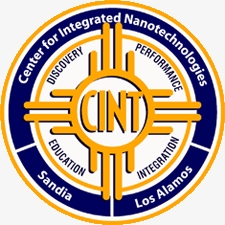Sep 24 2008
You should have so much patience to solder nanowires to nanoelectrodes. Talk about fine work. (A nanometer is a billionth of a meter.)

That’s why a new electroplating process that simultaneously joins many silicon nanowires to many prepatterned electrodes was selected for a 2008 Nano 50 Award by Nanotech Briefs.
The process removes many difficulties.
“All of the electroplating is done in parallel,” says Sean Hearne, a Sandia National Laboratories researcher at the Center for Integrated Technologies (CINT). “Everywhere there’s a metal contact, the electroplated nickel grows over the nanowire, capturing it.”
CINT is a DOE Office of Science nanotechnology center led by Sandia and Los Alamos National Laboratory.
Previous methods connected electrodes to nanowires one contact at a time. That kind of service may sound great in stockbroker ads; in a lab, it’s merely tedious.
Other methods required complex processes that included masking, metal deposition, and stripping, which often damaged the nano-wires.
The process could be important for commercial applications of semiconducting nanowires used in electronic sensor arrays, because it allows for the parallel processing of millions of nano-wires on a single wafer at lower cost than previous lithographic techniques.
In the team’s approach, microarrays of composite gold electrodes were lithographically formed on oxidized silicon substrates, followed by electric-field-assisted alignment of silicon nanowires between the electrodes.
The nanowire ends were then embedded in nickel by selective electrodeposition over the prepatterned electrodes. Annealing to 300 °C provided good electrical contacts for the doped nanowires.
The approach provides a parallel, maskless method to establish metal contacts to nanowires without need of high-resolution electron beam lithography for electrical and mechanical applications.
Hearne, who developed the electroplating process, worked with Arizona State University research leads and Tom Picraux, CINT chief scientist at Los Alamos National Laboratory. The overall work was led by former ASU School of Materials student Sarang Ingole, an advisee of Picraux. It was part of an ASU User Proposal with CINT titled “Doped SiGe Nanowires for Functional Nanodevices.” The subject was proposed by principal investigator Steve Goodnick and co-principal investigator Clarence Tracy, both at ASU.
The work, titled “Directed Assembly of Nanowire-Metal Contacts,” was chiefly conducted at CINT’s Los Alamos and Albuquerque sites. It appeared in a July 2007 issue of Applied Physics Letters as both a Letter and a cover image.
The Nano 50 will be presented at a special awards dinner to be held during the NASA Tech Briefs National Nano Engineering Conference in Boston on Nov. 12-13.